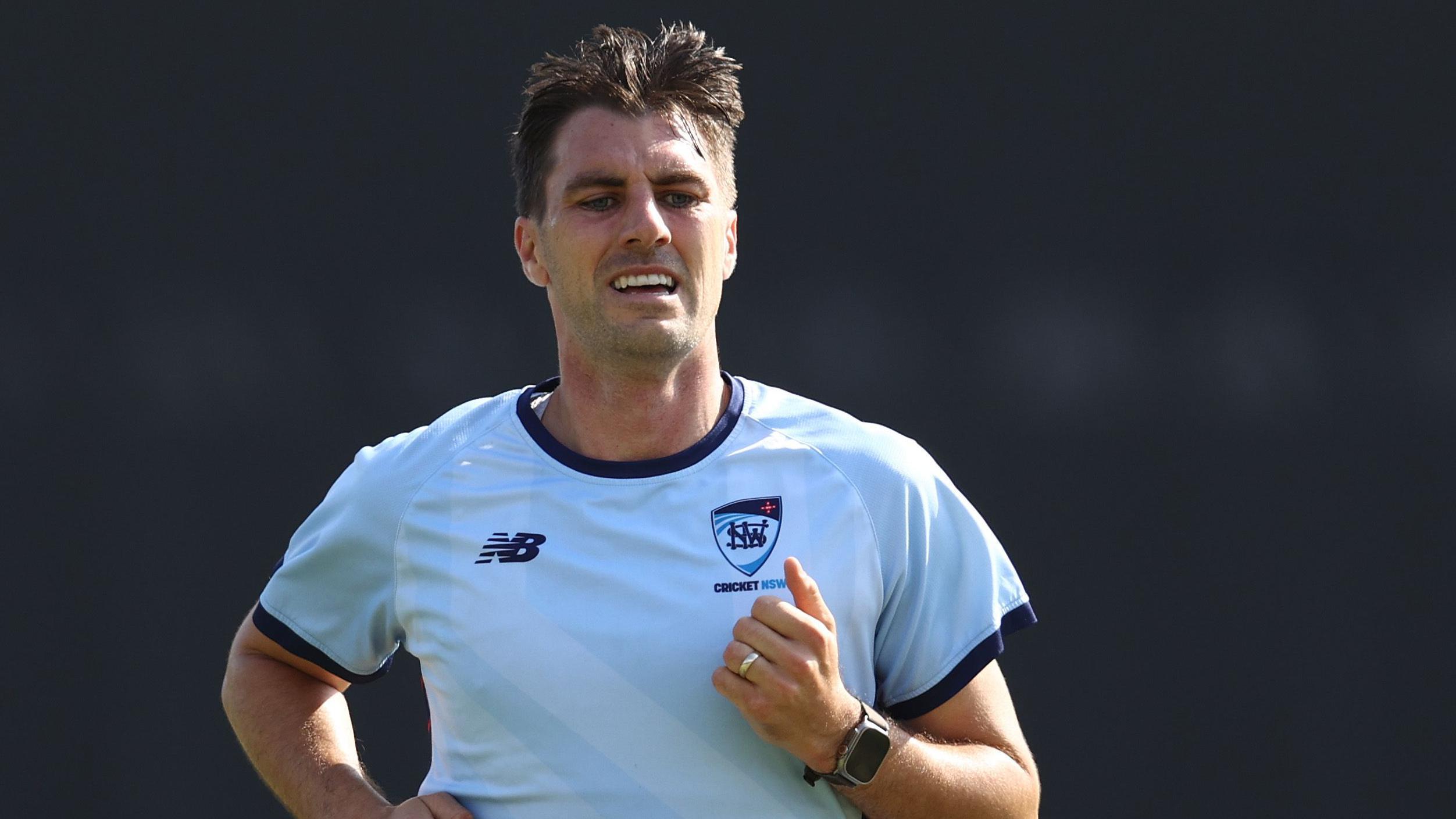Pat Cummins’ Injury Recovery Sparks Controversy: Is Australia’s Ashes Campaign in Jeopardy?
The Ashes series, a storied rivalry between Australia and England, has always been a focal point of cricketing passion and national pride. As the second Test approaches, the spotlight is firmly on Australia’s captain, Pat Cummins, who has been sidelined due to a lower back injury. His potential return for the second Test raises critical questions about the balance of team dynamics, leadership, and the physical demands of modern cricket.
Pat Cummins, who took over the captaincy just before the last Ashes series in 2021-22, has been a pivotal figure in Australian cricket. His leadership has been characterized by a blend of aggressive bowling and strategic acumen, making him a formidable captain. However, his absence from the first Test, which commences in Perth on November 21, has sparked concerns about Australia’s chances against a resurgent England side.
The injury, which has kept Cummins out of action since a Test series in the West Indies in July, raises significant questions about player fitness and management in high-stakes series. Cummins has expressed optimism about his recovery, stating that he is “on track” to play in the second Test, a day-night match starting in Brisbane on December 4. His return could be crucial, as he has been a standout performer against England, taking 91 wickets in 19 Tests at an impressive average of 24.10.
In Cummins’ absence, Steve Smith has been appointed as the stand-in captain for the first Test. Smith, who has had his share of controversies, including being stripped of the captaincy in 2018 due to a ball-tampering scandal, brings a wealth of experience to the role. However, the question remains whether he can galvanize the team effectively against an England side that has not won a series in Australia since 2010-2011.
Australia’s bowling attack, expected to feature veterans like Mitchell Starc, Josh Hazlewood, and Scott Boland, faces the daunting task of containing an England batting lineup that has shown resilience and adaptability in recent series. The age of the pace attack has also raised eyebrows, with critics questioning whether the team is relying too heavily on seasoned players. With only one player under 30 in the squad, the narrative around Australia being a team of “old-timers” has emerged, prompting debates about the future of Australian cricket and the need for rejuvenation.
Cummins’ recovery process is being closely monitored, with his reduced run-up indicating a cautious approach to returning to full fitness. His comments about not wanting to commit to a specific workload highlight the delicate balance between pushing for performance and ensuring long-term health. The modern game demands a high level of physical fitness, and the toll of back injuries on fast bowlers can be particularly severe. The management of Cummins’ workload will be crucial, especially if he is to play a significant role in the series.
The broader implications of Cummins’ injury extend beyond individual performance; they touch on the strategic decisions that teams must make in high-pressure situations. The Ashes series is not just about winning matches; it’s about national pride and legacy. The Australian team, under Cummins’ leadership, has aimed to reclaim its dominance in world cricket, and any setbacks can reverberate through the squad’s morale and public perception.
As the first Test approaches, the cricketing world watches with bated breath. Will Cummins be fit enough to return for the second Test, and if so, how will his presence impact the dynamics of the team? The stakes are high, and the narrative of this Ashes series is still being written. The tension between maintaining player health and striving for victory is a microcosm of the challenges faced by modern sports teams.
The question of whether Australia can rise to the occasion without its captain looms large, and the ramifications of this series will likely be felt long after the final ball is bowled. The Ashes are about more than just cricket; they encapsulate the spirit of competition, national identity, and the relentless pursuit of excellence. As the drama unfolds, the focus will remain on how Australia navigates these challenges and whether they can emerge victorious against their historic rivals.

Australia captain Pat Cummins says he is "on track" to play in the second Test of the Ashes series against England.
The pace bowler has not played since the end of a Test series in the West Indies in July and will miss the first Test, which starts in Perth on 21 November, with a lower back injury.
However, the 32-year-old has returned to bowling from a reduced run-up in his recovery and has targeted being back for the second Ashes Test, which is a day-night match starting in Brisbane on 4 December.
"It’s all feeling really good. On track and yeah, probably better than I expected," said Cummins.
"Each session is incremental. Once I get over to Perth, I should be pretty close to a full run-up and getting some overs in."
- ‘Australia not a bunch of old-timers – they’re an outstanding team’
- Only one player under 30 in Australia Ashes squad
Batter Steve Smith, who was stripped of the captaincy in 2018 following a ball-tampering scandal, will replace Cummins as skipper for the first Test of five against an England side who have not won a series down under since 2010-2011.
Cummins took 18 wickets when his side drew 2-2 in England to retain the Ashes in 2023 and, overall, he has taken 91 wickets against England in 19 Tests at an average of 24.10.
Mitchell Starc, 35, Josh Hazlewood, 34, and Scott Boland, 36, are expected to form Australia’s pace attack in Perth.
"It’s probably not until you get a bit closer that you can really know where you’re at," said Cummins on his recovery. "The good thing is that I’m pulling up well and the body is great.
"We’re trying to keep that second Test as a live option. I’ll have a really good bowl in Perth, and by then I’ll know where I’m at."
Cummins was guarded on how much he might play in the Ashes following a possible return in the second Test, as he said it depended on his workload.
"I don’t really want to commit to anything this far out," he added. "I’m pretty keen to play as much as I can.
"But realistically, if we have a big game and bowl 40 or 50 overs and then there’s a game that starts a few days later, it might be a bridge too far.
"I’m trying to get right, and if I get right then hopefully I’ll try to play as much of it as I can."
